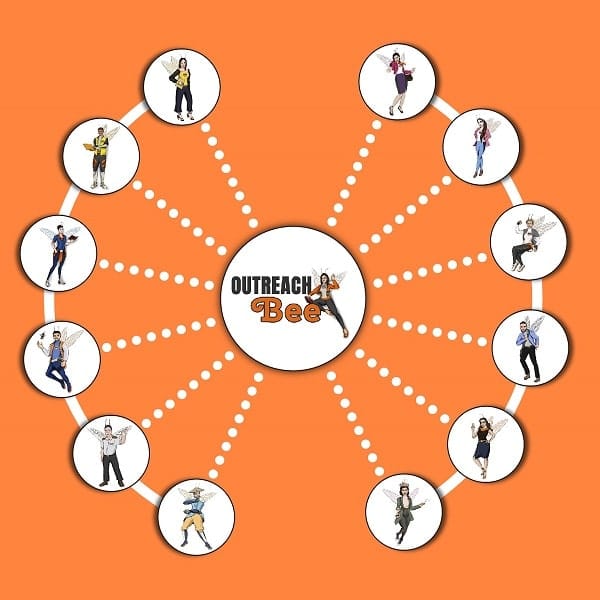Are you new to online business? Have you just launched your first website and are looking for the correct keywords to focus on? Don’t worry. You are at the right place. Today, we will discuss the step-by-step guide to finding the right keywords for your audience. Including the right keywords to rank high in search engine page results. So, let us explore what can be done after defining your website goals to finalize the correct keywords:
Examine the Intent of the Search
People search the internet for various reasons. If they use search engines, their search is said to be navigational when looking for a specific web page. Similarly, it is known as research if they are looking for a specific topic or commercial when collecting information to buy something. One must consider satisfying the purpose of searching for customers. So, think like a customer when shortlisting keywords. You can produce different types of content to target the right keywords. You can start a blog post section to include keywords according to your niche.
According to the search volume, divide the keywords into primary and secondary and mention these keywords in the title, headings, and subheadings. Next, you can include the keywords on the landing pages. Try to focus the multiple pages through keywords. Moreover, you can produce content including keywords for commercials. If you need assistance on this, you can take help from SEO services which can assist you in getting a high ranking on your focus keywords.
Analyze the Competitive Environment
When conducting keyword research, it’s critical to consider the competition for your target keyword. The simplest way to determine how competitive a keyword is, is to type it into the search engine and see what comes up. Ads are the first to look at, and they can easily be found in search engines as highlighted with ad or sponsored labels on the top of search results. So, it’s always recommended to look into such advertisements before developing your content. But, the sites that appear on top due to organic traffic are the next thing to analyze.
If this page runs several marketing campaigns to dominate the search results, it’s difficult to attain the first rank for your page.
Finally, have a look at the actual results. Try to find that you can generate more beneficial information for the average searcher than the stuff that now ranks first. Weak content is frequently brief, poorly formatted, and lacks important details. You can take the top spots by exceeding the competition to address the searcher’s needs.
Make Purchasing Journey Plan
Consider the typical path a potential consumer takes from first learning about your product to making their first purchase. Most customers will not purchase the first time they hear about your website for many firms, especially those that sell high-ticket items. They built a marketing plan intending to increase awareness and consideration. When both of these increase, it will influence the final decision. This is referred to as the purchasing journey in marketing jargon.
When a potential consumer realizes they have an issue, they are said to be aware. Potential clients in the awareness stage may not even know what their problem is called; all they know is that it exists. For instance, a person can have pain in the leg but cannot tell the reason. The potential consumer begins to name their problem and study different remedies during the final stage. They may visit a doctor or therapist for leg pain and be diagnosed.
The decision stage is the last stage. This is when a potential customer considers various options before deciding on a course of action. As marketers, we hope that customers will buy our product over our competitors. The customer might purchase a gel mouse mat and an ergonomic keyword. They’ll also have to decide which brand to buy and where. It’s helpful to consider your audience when creating content.
Use A Combination Of Long-Tail And Head Keywords
When you are all set with a market plan, you should choose a mixture of “head” and “long-tail” keywords to infuse into your content. Head keywords are brief phrases of 1-3 words linked to increased traffic and competition. Long-tail keywords are lengthy conversational phrases with less traffic and less competition also. Long-tail keywords are better for short-term, results-oriented strategies, while head keywords are better for long-term strategies. So, include both for excellent overall outcomes.
Start By Doing Some Exploratory Research
After those aims and that basic image in mind, you can begin your preliminary investigation. Make a list of root concepts. Begin by scribbling some thoughts for what people would look for concerning your company. You don’t have to be exhaustive, but try to think of at least a few broad categories of searches and both head and long-tail keywords that people might use to reach you: you can use keyword and topic generators. Then, based on some of your basic ideas, use an internet tool to assist you in coming up with more keyword and topic ideas. For this, you can use Moz’s Keyword Explorer tool because it helps you come up with concepts and provides you with results. The next step will be shortlisting the final list of right keywords. You can take the help of keyword planner tools to find the search volume of each keyword in the list and accordingly choose a mix of highly searched keywords and low competition long-tail keywords.
Consider the Most Appropriate Content-Format for Keywords
You might have problems getting some of your posts to rank for specific customers. To make matters worse, someone else had created a few blogs for the same client’s website, and their content had begun to rank. Your written content can be fantastic as always, but you didn’t include enough photographs in each blog. The client was selling shoes, and in that industry, a picture is worth a thousand words. Excellently written text without supporting photos just doesn’t cut it for anyone looking to learn about fashion and trends. You can map each keyword into a specific page, which will help distribute the traffic on various pages.
Summary
From the above discussion, it is quite clear that you should be very clear about your marketing technique. It is also essential to look for competitors’ ad campaigns and prepare your content strategy accordingly while focusing on the right keywords. If you need any assistance, you can hire SEO experts!
About Author: Ravi is CEO & Founder of Webomaze Pty Ltd. He believes in serving the industry with some unique solutions with a huge variety of services including web design, web development, eCommerce development, and so on.




Stop Eggnogging Around: 4 Holiday Outreach Templates That Land Links
The Gift Guide Gold Rush: Your Backlink Strategy for High-DA Sites